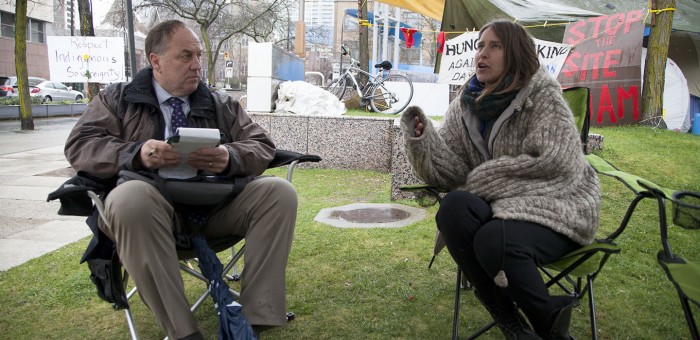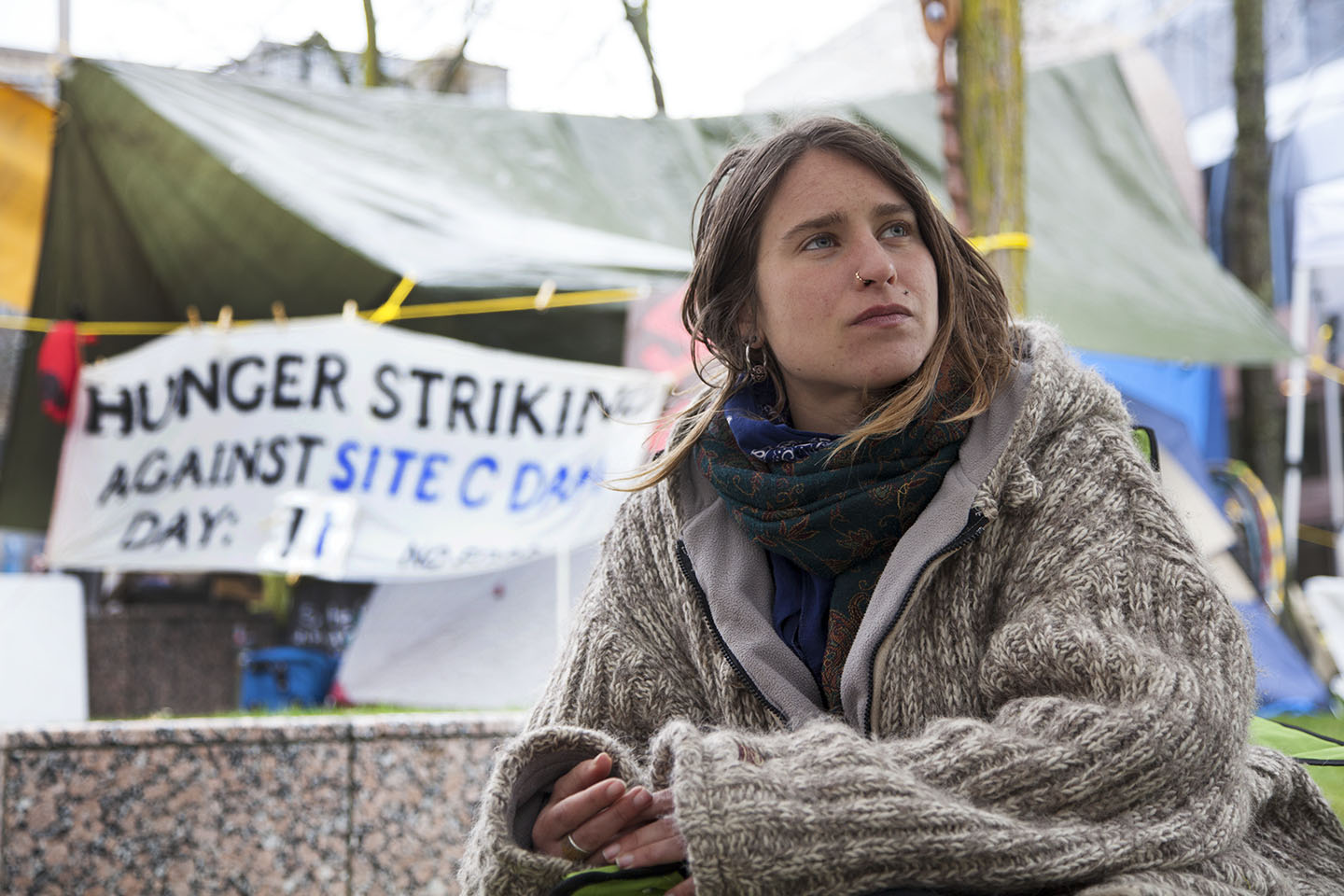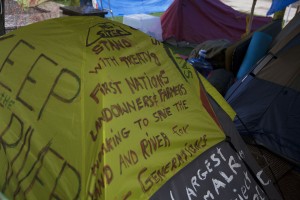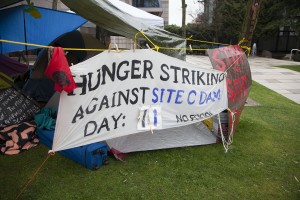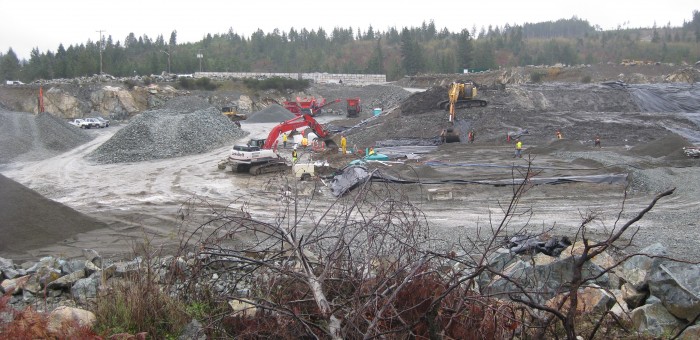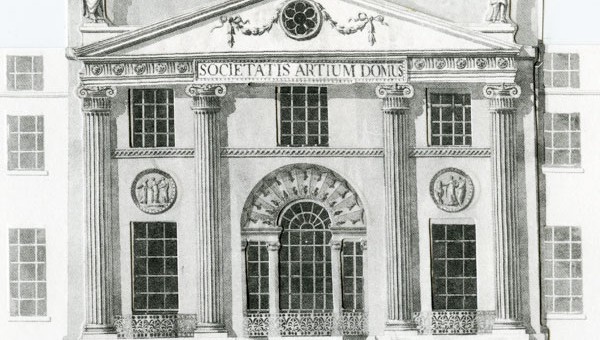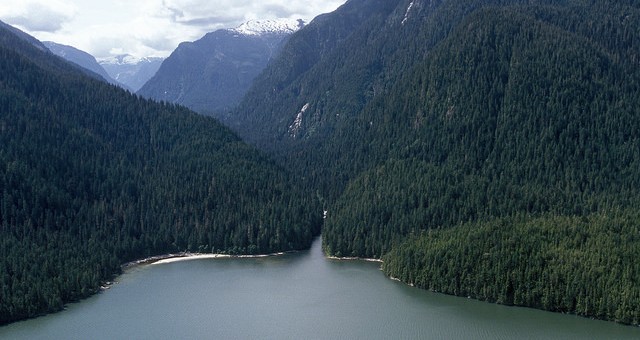Environment
Eleven Days & Counting: Hunger Strike Against Site C
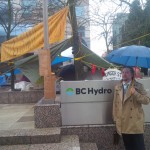 Today I was in Vancouver meeting with a number of business leaders in British Columbia’s creative economy. My colleague Matt Toner (Deputy Leader of the BC Green Party) and I took the opportunity to visit with opponents of the proposed Site C dam who were camped out in front of BC Hydro’s downtown Vancouver headquarters. It quickly became apparent to me that what is happening there qualifies as perhaps the most under-reported story of 2016.
Today I was in Vancouver meeting with a number of business leaders in British Columbia’s creative economy. My colleague Matt Toner (Deputy Leader of the BC Green Party) and I took the opportunity to visit with opponents of the proposed Site C dam who were camped out in front of BC Hydro’s downtown Vancouver headquarters. It quickly became apparent to me that what is happening there qualifies as perhaps the most under-reported story of 2016.
Those who have been following my work over the last few years will know that I have frequently spoken out against the reckless disregard of energy economics exhibited by the BC Liberals.
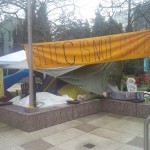 Whether it be the fiscal folly of moving forward with Site C, the risking of British Columbia’s triple-A credit rating, or the lost opportunities arising from proceeding with Site C (including geothermal or wind), I have been arguing for almost three years now that proceeding with Site C makes no economic sense.
Whether it be the fiscal folly of moving forward with Site C, the risking of British Columbia’s triple-A credit rating, or the lost opportunities arising from proceeding with Site C (including geothermal or wind), I have been arguing for almost three years now that proceeding with Site C makes no economic sense.
Let’s be clear. The BC Liberals are moving forward with the construction of the Site C dam exclusively because they want to ensure that LNG proponents have access to firm power so that they might use electricity-driven compressors in their liquefaction process (the so-called “cleanest LNG in the world”). For example, on November 4, 2014, BC Hydro and LNG Canada signed a power agreement that ensured taxpayer-subsidized power for the LNG industry in BC. But of course, as I have been pointing out for more than three years now, there will be no LNG industry anytime soon in BC due to the global glut in natural gas and plummeting prices for landed LNG in Asia.
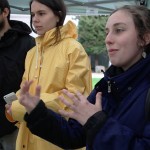 As the BC Government strives to “Get to Yes” on an electricity generation project that no longer has any buyers, they have turned to Alberta. Yet Alberta has said they are not interested in buying BC’s excess electricity and the Trudeau government pointedly excluded funding for BC-to-Alberta transmission line infrastructure in the 2016 budget.
As the BC Government strives to “Get to Yes” on an electricity generation project that no longer has any buyers, they have turned to Alberta. Yet Alberta has said they are not interested in buying BC’s excess electricity and the Trudeau government pointedly excluded funding for BC-to-Alberta transmission line infrastructure in the 2016 budget.
While the shenanigans of our political leaders in British Columbia play out, a remarkable young woman, Kristen Henry, has stepped up to draw attention to the negative consequences of moving forward with Site C.
I had the distinct honour of meeting with Kristin today. Kristin is in the 11th day of a hunger strike against the Site C dam. Stop and think about this for a minute. Can you imagine eleven days without food? Have you heard about this in the local media? I suspect not.
Kristin is an articulate, passionate and highly educated young woman who has literally put her life on the line in an attempt to draw attention to the reckless folly of proceeding with Site C. She is extremely concerned about Site C’s violation of indigenous treaty rights, its effect on food security, and its reckless economics. While the mainstream media may not have drawn attention to her remarkable achievements, rest assured, her efforts have had a profound impact on me.
Reacting to Woodfibre LNG Approval and Pacific NorthWest LNG
Media Statement: Monday March 21, 2016
B.C. Green Party Leader Andrew Weaver Reacts to Woodfibre LNG Approval and PNW LNG
For immediate release
VICTORIA B.C. – Andrew Weaver, Leader of the B.C. Green Party and MLA for Oak Bay–Gordon Head, has issued the following statement in response to the federal government’s request for more information from PNW LNG and the approval of the environmental assessment for Woodfibre LNG:
On Pacific Northwest LNG:
“I am deeply alarmed at BC’s Minister of Natural Gas’s comments that a properly functioning environmental assessment process constitutes a ‘needless delay’,” said Andrew Weaver. “The BC Liberal’s reckless BC LNG economics and environment of ‘getting to yes’ no matter what, calls into question whether the environmental assessment process under the BC Liberals is indeed credible.”
“There are a growing number of examples where an environmental process seems to be more about ticking boxes than about reviewing impacts. A process whose purpose is to evaluate whether a project should proceed will struggle to remain credible when the government is frantic to say yes to everything.”
“An LNG export industry is a financially foolish venture for a Province like B.C. to be pursuing, especially with other options readily available. The BC Liberals refuse to recognize that the future of the BC economy is not rooted in the energy projects of the past, but in environmental tourism, clean-tech and knowledge-tech industries.”
On Woodfibre LNG:
“It is incredibly unfortunate that the Woodfibre LNG proposal was examined through the lens of Harper’s Canadian Environmental Assessment Act, 2012. This act gutted the existing environmental assessment process,” said Andrew Weaver. “Given that the federal assessment was substituted in favour of a BC assessment under the Harper administration, I am concerned that the review that took place did not ensure that environmental impacts were appropriately accounted for and mitigated.”
“This is the wrong project, in the wrong place, at the wrong time. It will hurt our climate leadership, it lacks a strong economic case, and it has received no social licence for what is being pushed forward. The community has not given its permission.”
“I think it is essential that we follow the position that Prime Minister Trudeau himself established that while ‘government’s grant permits, only communities grant permission’. We look forward to working with the federal government to quickly update and implement the environmental review processes they are using.”
“At the end of the day however, it is the BC Liberal government that is pushing for LNG in BC, and they hold ultimate responsibility for the lack of social license for this project and for an inadequate environmental assessment process.”
Neither Woodfibre LNG nor PNW LNG have made a Final Investment Decision (FID).
– 30 –
Media contact
Mat Wright, Press Secretary
Office of Andrew Weaver, MLA
1-250-216-3382
mat.wright@leg.bc.ca
Response to BC Supreme Court Ruling on Contaminated Soil Dump at Shawnigan Lake
Media Statement: March 21, 2016
Andrew Weaver responds to BC Supreme Court Ruling on Contaminated Soil Dump at Shawnigan Lake
For Immediate Release
Victoria B.C. – Andrew Weaver, Leader of the B.C. Green Party and MLA for Oak Bay-Gordon Head issued the following statement in response to the BC Supreme Court Ruling that a contaminated landfill is not a permitted land use at South Island Aggregates Quarry:
“I want to recognize the hard work of Shawnigan Lake residents in coming together as a community and standing up for their rights in the face of government inaction. This is a vindication of their concerns, and wouldn’t have been possible without their tireless effort.”
“I look forward to reviewing the ruling and working with local politicians and residents to ensure that we continue to move this issue forward in a way that protects the rights of the Shawnigan Lake community.”
– 30 –
Media Contact
Mat Wright – Press Secretary Andrew Weaver MLA
1 250 216 3382
mat.wright@leg.bc.ca
Congratulations to Guy Dauncey
Today in the legislature I had the distinct honour of introducing Guy Dauncey. I took this opportunity to celebrate his recent election as a Fellow of The Royal Society for Arts. Guy is in fine company. He joins such past fellows as Charles Dickens, Adam Smith, Benjamin Franklin, John Diefenbaker and Stephen Hawking. Congratulations Guy… and well deserved.
Below are the text and video of my introduction.
Text of Introduction
A. Weaver: It gives me great pleasure to introduce Guy Dauncey, who’s in the gallery today. Guy was recently elected a fellow of the Royal Society for the Encouragement of Arts, Manufactures and Commerce. The Royal Society for Arts is a London-based, British organization committed to finding practical solutions for social chances. Their mission is “21st century enlightenment, enriching society through ideas and action.”
Guy joins a worldwide network of innovators who have received this prestigious award. The royal society was founded in 1754 in Covent Garden, London, based on the belief that the creativity of ideas could enrich social progress. He is in good company, along with Charles Dickens, Adam Smith, Benjamin Franklin, John Diefenbaker and Stephen Hawking.
Guy is an author, speaker, organizer and consultant who specializes in developing a positive vision of a sustainable future and translating that vision into action. Guy epitomizes the aim of the RSA to bring about positive social change. He has worked tirelessly since the 1970s towards achieving a brighter future and a sustainable planet.
Please join me in welcoming Guy Dauncey to the House today, in recognition of this incredible honour he has received.
Video of Introduction
Bill 2 – 2016: Great Bear Rainforest (Forest Management) Act
Today in the Legislature I rose at second reading to speak in support of the historic Bill 2 – 2016: Great Bear Rainforest (Forest Management) Act. This bill is being supported by all parties. It provides the legislative changes required to enable the recent negotiated agreement between 26 First Nations, the province, non-government organizations and forest companies that protects vast areas of our Great Bear Rainforest.
Below are the text and video of my speech. Near the beginning a speech you will see that a class of grade 5 students from Vancouver were introduced by George Heyman, MLA for Vancouver-Fairview. It was a light moment for both sides of the house as we collectively greeted the students.
Text of my Speech
A. Weaver: It gives me great pleasure to rise with my colleagues on both sides of this House to support, as well, Bill 2, the Great Bear Rainforest (Forest Management) Act.
This is truly a remarkable event when we find 26 First Nations, the province of British Columbia, several — in fact, numerous — non-governmental organizations and forest companies coming together to reach an agreement in terms of what can be logged, what will be logged, what should not be logged and how logging should be done in an area on the west coast of our province known as the Great Bear Rainforest.
The bill before us, Bill 2…. Let’s be clear that this bill is really a bill about what can be logged, what can be cut. It leaves a lot, as we’re seeing from other bills, up to regulations that will be put forward through order-in-Council at some point in the future. I don’t want to diminish the importance of this bill, of course, but again, I want it to be very clear that what we are debating is what can be cut in the Great Bear Rainforest, rather than, in some sense, the ways in which we do cut or the overall ecosystem-based approach to forestry that’s being taken.
Let me also acknowledge that, as with any bill or any agreement, there will be those who think that government gave away too much. There will be those who think that government didn’t give away enough. There will be those environmental groups that think this was a sellout. There will be those environmental groups that think this is a great success.
This is true of every agreement that is made. But what’s important to recognize is that we were not at the table. Who was at the table? Well, 26 First Nations, a number of environmental groups and a number of forest companies. To get agreement on this is truly an important event.
G. Heyman: With respect to the member for Oak Bay–Gordon Head, I seek leave to make an introduction.
Leave granted.
Introductions by Members
G. Heyman: Thank you very much, and thank you to the member.
Joining us in the gallery above me today is a grade 5 class. In fact, the class is split in two from Talmud Torah School in Vancouver-Fairview. I met them at the door. They’re accompanied by teachers Lisa Romalis, Becky Chan and Nicole Andersen.
This is almost a school within a school. There are 75 grade 5 students. We had a very brief discussion about the bill that we’re debating right now, and they’re pretty excited about being here for such a momentous occasion. I hope that the House will make them very, very welcome.
Debate Continued
A. Weaver: It gives me great pleasure to sit down and allow the member for Vancouver-Fairview to introduce a class, because it is so incredibly important that we engage our youth in our democracy. So thank you to the member, and thank you to the class for being here, even though I can’t see you up there.
On to the agreement that we’re debating, Bill 2, Great Bear Rainforest Act. I’m sure that each and every young person in that class is going to go home riveted to the screen and watch all debates today and make sure that they study this, because there will be a test on Friday next week on what you have learned about the Great Bear Rainforest. I’m just joking.
Interjections.
A. Weaver: There’s no test. I’m only joking.
Interjection.
A. Weaver: Oh, it’s Good Friday, of course. It’s a holiday.
Coming back to the agreement, as I mentioned, there will be some who don’t think enough was given. There will be some who think too much was given. But I say to those people and to those groups: “You were not present at the table. I was not present at the table.” Those who were present at the table — 26 First Nations, the province, non-government organizations, forest companies — came to an agreement, a monumental agreement, that protects vast areas of our Great Bear Rainforest.
Now, the issue of protection is a complex one. As we know, the forests make up more than half of the Great Bear Rainforest — a total of 3.7 million hectares, or 9.1 million acres. The land use orders in this bill identify 1.36 million acres of managed forest that will support a sustainable harvest. That creates stability for First Nations, workers, communities, investors and customers alike.
One-third of the Great Bear Rainforest is fully protected in parks and conservation areas, and about 9 percent of the total — it’s about 15 percent of the forested area — is available for timber harvesting in the managed forests. The managed forests comprise 550,000 hectares, or about 1.36 million acres, where harvesting of old growth and second growth is guided by ecosystem-based management.
We’ll explore at committee stage what this government’s interpretation of ecosystem-based management is, but I would like to outline the subtle differences between the various land use zones. It is complex, and it is something that I think that not all will appreciate.
So 471 hectares are fully protected in what are known as parks and protected areas. Now, protected areas generally have one or more existing or proposed activities that are not usually allowed in a park — i.e., perhaps a proposed industrial road, pipeline, transmission line or communications site. Allowable activities and management direction are determined by specific provisions and special conditions when the area is established as well as relevant sections of the Park Act and the Park, Conservancy and Recreation Area Regulation, as identified in the order-in-council.
Conservancies are also being used. Now, 1.5 million hectares, or about 3.7 million acres, are in a designation that protects ecological values and recognizes the importance of specific areas for First Nations.
What are conservancies? Well, conservancies are slightly different, again, from the protected areas. They are Crown land set aside for four things: “(a) the protection and maintenance of their biological diversity and natural environments; (b) the preservation and maintenance of social, ceremonial and cultural uses of First Nations; (c) the protection and maintenance of their recreational values; and (d) the development or use of natural resources in a manner consistent with (a), (b) or (c).” As I say, conservancies are a designation that protects ecological values and that recognizes the importance of specific areas to First Nations.
So 764,000 acres are being designated biodiversity, mining and tourism areas. These are areas where the primary use is biodiversity conservation and protection of ecological and cultural values. Commercial forestry and hydroelectric generation linked to the power grid are not allowed.
Then there are the special forest management areas, 675,000 acres of which are preserved. These are areas where hydroelectric generation and mining and tourism development are allowed as long as they maintain ecological integrity. Commercial forestry is not allowed. It is expected that some of these will become biodiversity, mining and tourism areas or conservancies over time. The land plan and the land use zones are quite complex and lead to a rather beautifully coloured map — which I’m not allowed to show, as it would be considered a prop — that we have to consider when we look at the Great Bear Rainforest.
When I quote a couple of leading voices on this agreement, I think it’s important to recognize that there is widespread support. Vicky Husband, as we all know, one of B.C.’s leading environmental voices, said: “It is impressive that environmental negotiators were able to get so much when government wanted to give so little. But she is dismayed the deal has allowed the government to cast itself as green, when it is still allowing ancient forests to be logged and grizzly bears to be shot.” So there’s support but qualified support.
Rick Slaco, who chairs a group representing the logging companies in the region, stated: “What we’re getting for it is a dedicated land base, a defined amount of harvest, a harvest that is conflict-free, a harvest we can plan our business around. It comes with a social licence.” He also noted: “The significant part of this agreement for the forest industry is that we’re still going to cut trees down. We’re going to cut down less of them” — he should have said “fewer of them” — “and cut them down in a different way.”
Interjection.
A. Weaver: I’m glad that the class has now left. I was just correcting the grammar for them there. I should add “sic” in brackets for Hansard there.
“We didn’t do this to go out of business,” he says.
We have qualified support from Vicky Husband, a well-known name. Frankly, to get qualified support from her is quite a sign that this is a deal that has got widespread support in the province — and from the forest industry as well, when so much land is preserved, is also quite a significant coup that we have.
I do caution some temperance on the rhetoric that we’re hearing from the government. I recognize that the government is proud to bring this to us today, as we are all proud in British Columbia to be able to support this. However, statements like: “We’re green world leaders. This is our gift to the planet….” It’s a little tough to take from a government that’s purporting to develop an industry that the rest of the world is either moving away from or already has a glut of supply in.
Let’s not forget, too, that in fact, the deal that saved the Great Bear Rainforest has actually been announced something like 15 times already over the past number of years. While an often-cited announcement, it is important to recognize that it is this government and this Legislature that has the honour of being able to prove it today.
While I do caution the temperance, government doesn’t need to oversell this. This sells itself. There’s no need for rhetoric to say how great government is in doing this. This sells itself. We will praise this agreement on this side of the House as much as anybody. So I suggest that in some sense, credibility is lost a little bit if government touts its own success. Let others tout this success, because this is a success, and we are here to actually support government on this.
But it is not the thing that makes B.C., giving a gift to the entire world, green leaders of the world. It’s an important step, an important conservation step, a historic agreement, that puts the rights of First Nations front and centre and the rights of ecological systems there front and centre. We’ll explore this in more detail at committee stage.
As I mentioned, this bill really, again, is about very specific details focused on determining the allowable annual cut and forest licences, tree farm licences, that will be affected. It’s not light reading for grade five elementary students who may attend it here. The summaries are much easier to grapple with. As the government has suggested, this bill will: “Enable implementation of unique ecosystem-based management rules to the Great Bear Rainforest that move beyond current legislation while ensuring that normal rules under the Forest Act still apply.” This is important, but we need to explore what government is thinking “ecosystem-based management” means.
Government also is suggesting this will “Legally establish a Great Bear Rainforest area and assign an initial allowable cut of 2.5 million cubic metres per year for ten years for the entire area. But after ten years, the allowable annual cut would be determined by the chief forester under section 8 of the Forest Act, as is the case in other management units” — again, something that needs exploration at committee stage as to what government is thinking here in the longer term.
The government says that this agreement will “Establish new timber supply areas and reconfigure existing ones to better reflect the boundaries of the Great Bear Rainforest.” Again, something that we’ll explore further at committee stage with respect to what the boundaries are, and how they are defined, of the Great Bear Rainforest.
The government also says that this bill will “Provide for the designation of new special forest management areas that prohibit commercial timber harvesting areas.” Again, here, we’ll seek information further as to what commercial means in this regard and how the different land use zones come in to play.
Government says that it plans to “Enable regulations to specify where forest practices may differ from those under the Forest and Range Practices Act and regulations.” Again, this needs to be explored more comprehensively in the committee stage.
Finally, this bill, government states, will “Allow the minister to set ‘partitions’ at the licence level, where partitions can be set to ensure a certain portion of a licensee’s annual cut is directed in a particular geographic area or restricted to a particular tree species” — again, a topic that I think needs to be explored further at committee stage.
In conclusion, I, like the rest of my colleagues in this chamber, am delighted to stand and support this historic agreement. I look forward to committee stage, to explore some of the thinking of government as we move towards a discussion of what it has in mind with respect to the regulations that it is empowering in the introduction of this bill.
I leave government with a final note. Let us celebrate your successes well. It is far better than when government touts its own successes too much, because people don’t actually value and appreciate the success when it is done that way. It is better when others call you world class. It is better when others congratulate you. When one congratulates one’s self or one calls one’s self world class, it makes one wonder if you are world class or whether we should be congratulating you.
Video of my speech

